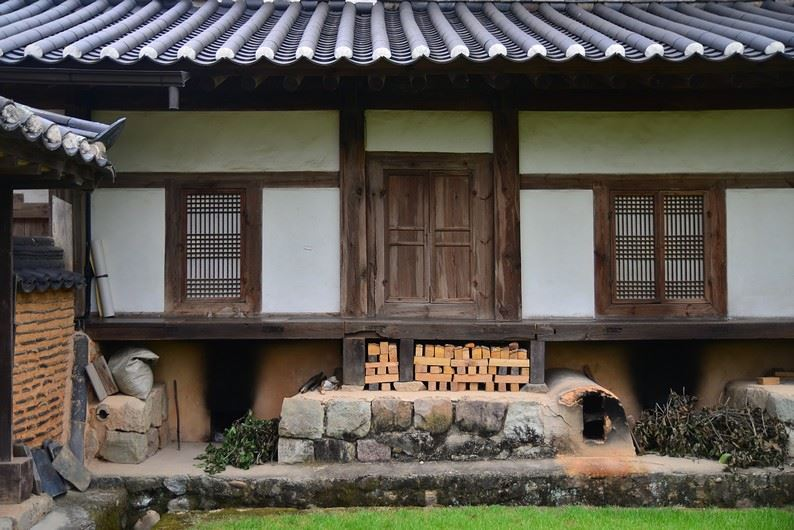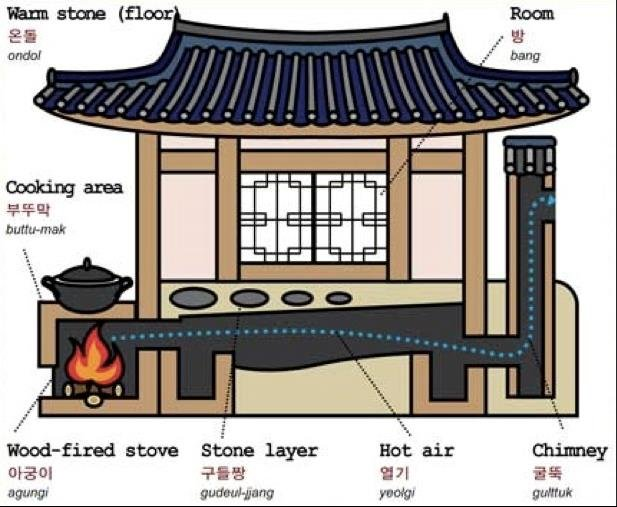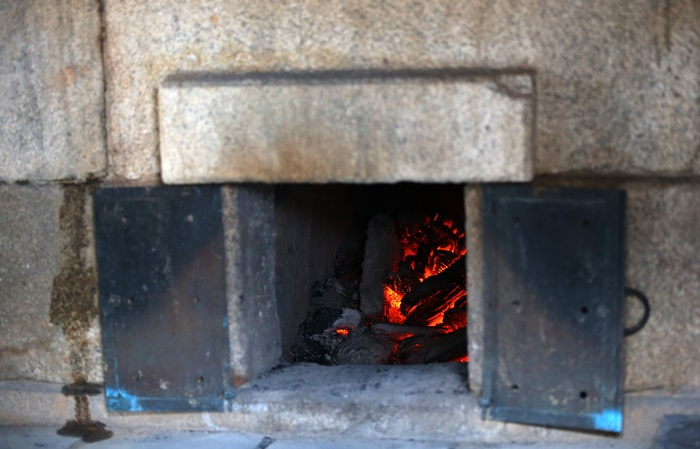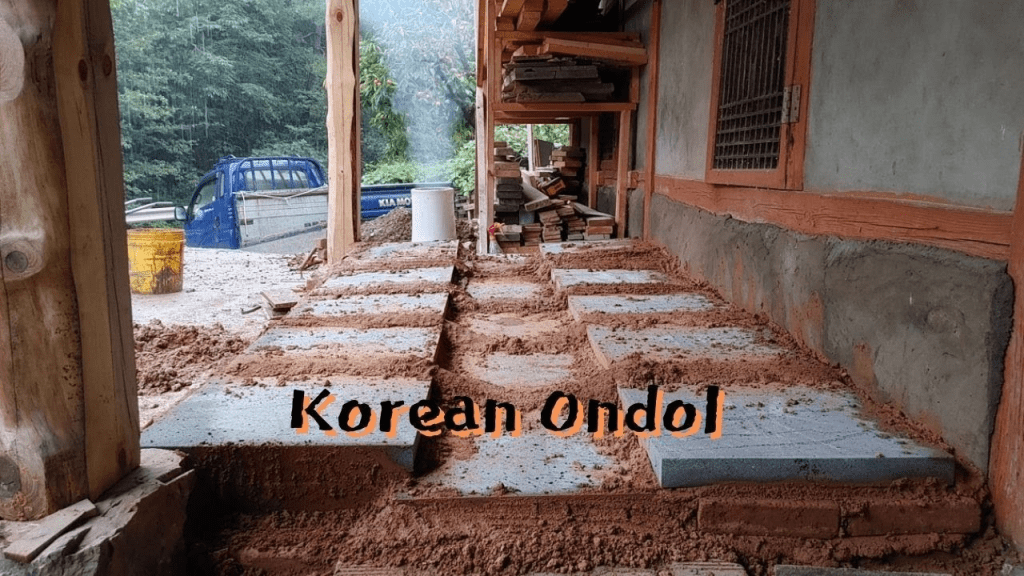Long before thermostats, central heating, and electric radiators, Koreans found a remarkably effective way to heat their homes from the ground up. This system, called ondol, used heat from wood-burning fires to warm stone floors. While its concept is rooted in ancient architecture, the ondol’s influence can still be felt in Korea today, both culturally and physically.
More than just a clever way to survive winter, ondol was a way of living, shaping how people cooked, slept, socialized, and even thought about space in the home. What began as a practical solution over two thousand years ago has become a symbol of tradition, identity, and sustainable design.

How Ondol Works
The traditional ondol system is deceptively simple and incredibly efficient. Underneath the floor of the home runs a network of flues and smoke channels made of stone and clay. These passages connect to a fire source typically a stove or kitchen hearth called an agungi.

When a fire is lit, the smoke and hot air are guided beneath the floor through these flues, heating the thick stone slabs above. The warm stones then radiate heat upward into the living space. Once the smoke exits the system, it’s channeled safely out of the home through a chimney.
Unlike Western fireplaces, which heat by radiating warmth through the air, ondol warms the body directly through contact with the floor, creating a deep, lasting heat that is especially appreciated during Korea’s frigid winters.
Video:
Ancient Korean Ondal Smoke Heated Floor
More Than Just Heat
Ondol didn’t just change the way homes were heated it influenced how people used those homes.
Because the floors were warm, people began to sit, sleep, and eat on the ground. Furniture was minimal. Chairs and beds were replaced with floor cushions and roll-out bedding (yo and ibul). Rooms were multifunctional, easily transforming from sleeping quarters to dining areas or workspaces.
This closeness to the floor fostered a unique domestic rhythm. Children played on the warm ground, families gathered for meals cross-legged, and elders rested on mats that kept them comfortably heated. The floor wasn’t just a surface it was a communal space, central to daily life and interaction.

Ondol’s Cultural Legacy
The ondol heating system has long been intertwined with Korean identity. It reflects values of simplicity, efficiency, and harmony with nature. In fact, the warmth of ondol is so essential to Korean comfort that many Koreans abroad still seek out heated floors or try to replicate the sensation with electric blankets or floor heaters.
Video:
How Koreans can sleep on the floor even in severe winter weather (ft. Ondol)
Even the Korean language reflects ondol’s impact. The word “anbang” refers to the warm inner room where the ondol heat was strongest, typically reserved for elders or the head of the household. It became a symbol of respect and comfort.
Modern Adaptations: From Fire to Technology
In modern Korean homes and apartments, the ancient flue system has been replaced with hydronic radiant heating pipes running beneath the floor that circulate hot water. It’s the same principle as traditional ondol, just cleaner and more efficient.
New construction in Korea, from high-rise apartments to suburban houses, still incorporates floor-based heating as a standard feature. It’s not viewed as a luxury but as a basic necessity. Even in public spaces like hotels, traditional guesthouses (hanok), and spas, heated floors are cherished for their comfort and therapeutic value.
Globally, architects and designers are increasingly looking to ondol-inspired designs as a sustainable solution. Radiant floor heating uses less energy than forced-air systems and provides more consistent warmth. What was once an ancient technique is now part of the green-building conversation.

Conclusion: A Legacy That Endures Beneath Our Feet
Korea’s ondol system is more than an old heating method it’s a living tradition. It reflects how architecture can shape culture, and how the simplest ideas, born from necessity, can last for generations.
From ancient stone flues to smart, energy-efficient homes, the spirit of ondol continues to warm not only floors but the way people connect with their space and each other. In a world constantly seeking comfort and sustainability, the ancient Korean wisdom of heating from the ground up still holds fire.


